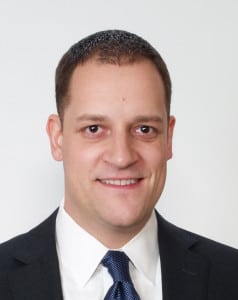Reporting metrics to senior-level management is a highly sensitive topic in PR circles. With budget season upon us, the topic gains in importance. But how should it best be done? Specifically. Are face-to-face meetings still important or can results be reported using phone and/or email? Does PR call the meetings? Are they regular or informal? What’s the tone of the meetings? What tools are used for measurement? What questions do senior leaders ask during presentations? What works well and what doesn’t? We asked several PR pros to tell us how they report results to senior managers and clients.

Managing Up, Honestly: For Chris Albert, one of the keys to successful reporting is having a direct line to the top. In his case, National Geographic Television’s CEO and the heads of its networks, National Geographic Channel and National Geographic Wild. “I’m lucky to have that. It shows [the CEO’s] respect for the importance of communications,” he says. Without such access “everything else suffers, including reporting results.” In fact, he has a standing meeting each Monday with the CEO and the networks’ heads. Discussions center on the week ahead and “hot-button issues.” He’s asked about completed and ongoing campaigns, what’s worked, what’s been learned, what can be done better or differently.
Constant Contact: Beyond the face-to-face sessions, “we are constantly communicating” via phone, email and in person. “The hot issue Monday is never hot later in the week.” Another key is reporting results with integrity. “I try to be candid, honest and straightforward…and never try to oversell [your CEO] by saying that something’s bigger than it really is. It will always backfire.” In addition to the weekly meeting with the CEO, Albert presents at biweekly senior staff meetings. He also has a regular Monday meeting with the heads of various departments. Aside from those face-to-face sessions, “we also like to celebrate our successes with the entire network. If we’ve done well on something we’ll send an email” to the full staff. When network talent is scheduled to guest on a talk or news show, “we’ll send an alert to everyone and follow up” with clips from the show.
Always on Sunday: Each Sunday Albert compiles an email that he sends to about 50 senior staff and assistants listing items for the week ahead, including show premieres, press events and talent interviews. Similarly, before a presentation Albert frequently will email data to senior management. In addition, each Friday his department sends a recap of what was said and written about the networks during the week.
Light Tools: While he realizes measuring results are important, Albert “is not a fan” of any tool. “Our best measurement of success is to outline goals and expectations ahead of time,” he says. He also credits his senior suite for understanding that “it’s quality over quantity.” Mind you, as an adjunct professor at American University, Albert’s lectures cover “the gamut” of measurement and evaluation tools, free and paid, including counting clicks, Internet searches, focus groups and surveys of audience attitude. Still, even if he had additional dollars Albert would forego purchasing tools and invest in tactics as well as “opportunities in the digital space.” During presentations, “I try to remember that the world doesn’t need more data, it needs analyzed data.”

Tools: Since Perkett devised an analytics software platform based on the Barcelona Principles [see page 6], we couldn’t resist asking her about which tools, besides her own, she uses and admires. Perkett says she “looks at” Sprout Social and Buffer. I think Google Analytics, and the analytics on Twitter, LinkedIn and Facebook are good, too…I know people use Cision, Little Bird and Meltwater.” A tool she says is “great” for internal PR, ie, measuring who has the best relationship with a reporter, is MyIrisPR. “You have to find the tool or tools that are right for you and your budget,” she says, adding, “no tool does it all, nor can it replace human analysis.”
What Works: Following from the above, Perkett advises “always presenting data with analysis.” And don’t avoid mentioning what failed. In addition, she advocates transparency—tell the senior level where money is being spent—“they’re always asking questions about value.” By the same token, don’t avoid telling the senior level tactfully what it can improve—the CEO promised to be available for media, but wasn’t, for example.
Face Time: Perkett advocates checking in weekly by phone or email for an hour and having face-to-face meetings monthly. She sends clients weekly status reports, “including input and output” and usually avoids sending charts and graphs prior to regular meetings unless they are quarterly and end-of-year sessions, which last 2-3 hours. She’s often asked questions about branded content, including its ROI and how it measures up against third-party content in terms of engagement. “They also always ask about the competition and how to attract high-quality media.” Questions about trends also are normal, she says, as are queries about strategies and volume of coverage, reach and which key messages are being picked up.

In the Beginning: While Roderick has clients who insist on using AVEs, he prefers to avoid using them “as a measure for PR…there’s a difference between advertising and editorial.” His preference is when companies decide on goals before beginning a campaign. “Knowing where you’d like to be and why, and gauging your effectiveness in reaching your goals” is the best measurement. One of his clients is a large company that uses a “detailed matrix” of goals it deems important. “It measures sentiment, how it’s doing versus competitors and alone…that’s a really good qualitative way to measure something that’s supposed to be quantitative.”
Beware Results-Only Meetings: Roderick prefers avoiding “results-only” meetings. Instead he advocates including results reporting as part of regular monthly meetings and end-of-year sessions.
Tools: Roderick likes results “to be as raw as possible…I like to know where things appeared without a lot of results around it.” That said, he says Factiva is useful as well as Google Analytics.
Paper Tiger: The question he gets often after a spike in media activity is how do you keep it coming? How can we do it again? “You also get questions about value” and whether something appeared online and in print. “It still matters to people to be in print, particularly when you are in a major outlet.”
CONTACTS: [email protected], [email protected] (Perkett), [email protected]
This article originally appeared in the September 21, 2015 issue of PR News. Read more subscriber-only content by becoming a PR News subscriber today.
